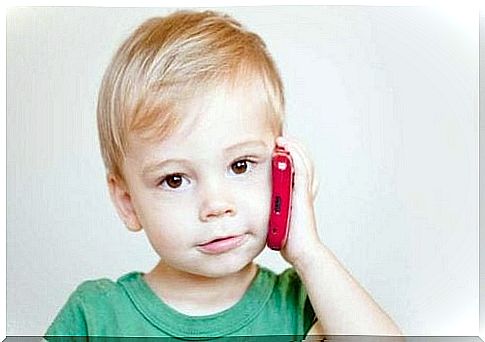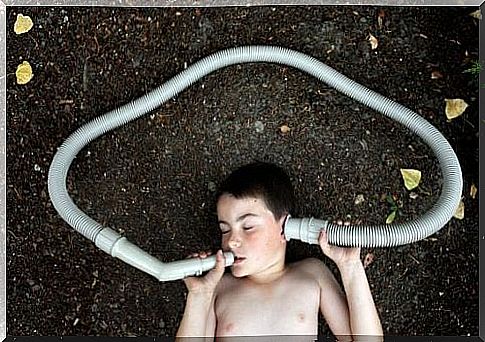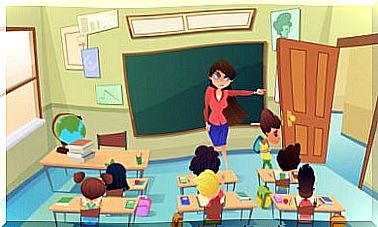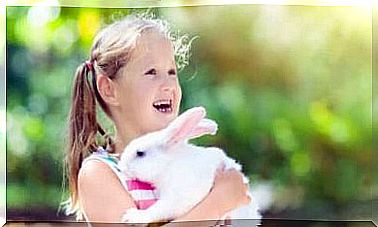Echolalia: What Is It, And How To Act? – Being Parents

This language disorder in the little one manifests itself in the form of an echo. It is characterized by the fact of repeating in a semi-automatic and compulsive manner. And even, children who suffer from it tend to imitate the original intonation of their interlocutor. So, of course, we must ask ourselves how to act in the face of this disorder. Find out with us!
The different categories of echolalia
There are different types of echolalia. We can discern various classifications according to the aspects that we take into account. Thus, specialists distinguish the typology of this language disorder by paying attention to the time that passes between the original sentence and the echo, the way of repeating, and the communicative intention.
Classification based on echo propagation delay

- Immediate echolalia. The repetition of the original sentences occurs immediately after they have been spoken.
- Delayed echolalia. The echo arrives after a certain period of time. It can take a few minutes, hours, or even up to several full weeks.
According to the communicative intention of the child
- Functional echo. In the case of this classification, the child manifests an intention to communicate or inform.
- Echo not functional. This type of echolalia has no intention of communicating. This is why it is considered to be automatically stimulated.
Classification based on a comparison between the form of the original sentence and the given echo
- Exact echo. The original pattern of the phrase and its repetition are completely identical.
- Reduced echo. Only part of the original version is faithfully reproduced. Usually this is the last part.
- Amplified echo. In this case, even if we observe some modifications compared to the original sentence, there is no modification of the overall structure of the utterance.
- Mixed echo. In the case of this echo, the model sentence is partly altered. We actually denote creativity in general, with children rearranging the general structure.
How to treat echolalia?
Be careful, the complexity of this type of disorder in children lies in the treatment to be given. In reality, the treatment depends entirely on the type of pathology in question. This is why it is very important to establish a correct classification to determine the mode of intervention.
Treatment for functional delayed echolalia
The idea of this intervention is to take advantage of this delayed echo, when it does indeed have functionality and there is an intention to communicate. Thus, the objective is to use sentence models which can help the child to improve his language.
It is understood that the alternatives offered to the child must be adapted to his age and level of development. And on the other hand, the alternative to echo must provide greater precision at the communicative or informative level. The idea is therefore to pay attention to the sentences that we say, and to say them better.
This work is progressive work which requires great patience. At each stage, the sentences or propositions must be more and more complex. Once the child begins to succeed in the repetition exercise, it actually activates a positive function of reacting to correctly developed propositions.

Intervention on immediate echolalia
In this kind of work, the therapist will try to subject the echolalia to a series of discriminative stimuli. The idea is that the child understands, detects and determines when it is relevant to repeat the sentence involuntarily, and when it is not.
For this, it is essential that the child learns to distinguish what is correct to repeat and what is not logical to repeat. Thus, he is taught to repeat only when he is expressly requested. In this case, specialists can use different working methods.
What to do in the case of non-functional echolalia
There is a difficult conflict here. Indeed, when we are faced with a non-functional disorder, it implies that linguistic development will be hampered to a certain extent. Therefore, the anomaly becomes a real barrier to communication for the child who suffers from it.
Finally, the specialist will try in these cases to completely eliminate infantile echolalia. One of the most effective strategies for this is to explain to the child that this type of repetition is not appropriate in a number of specific contexts.
In this type of pathology, a series of behavioral techniques can be used, which can be multiple. In this perspective, we have in particular the recording of information, and the reinforcement of incompatible behaviors.









